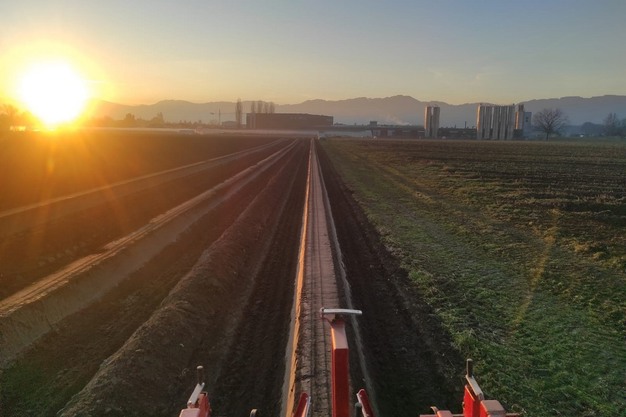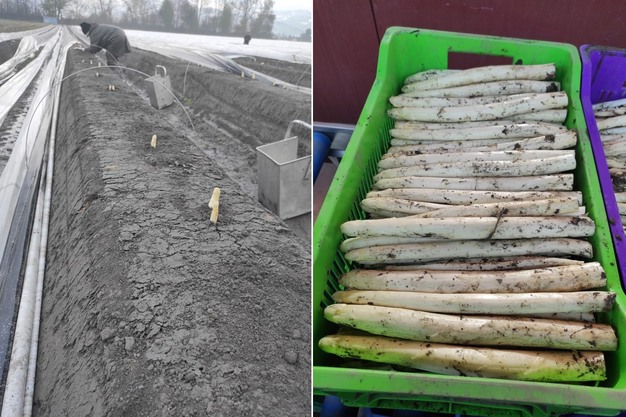The first Swiss heated asparagus was harvested at the end of week 12, roughly in line with last year. "We now have a slightly larger quantity at the start of the season than last year," says Fabian Kummer from the Schmitterhof in north-eastern Switzerland, who produces around four hectares of heated asparagus of the Backlim variety. The asparagus from heated cultivation is sold to the catering industry through two selected wholesale partners. "Of course, heated cultivation is very cost-intensive, but it enables us to be on the market 7-10 days before the early asparagus from regular, unheated cultivation."
 © Hugo Huijbers | FreshPlaza.comIn the early season, the Schmitterhof mainly produces the Backlim variety, while in the later season, they focus on Ramires and Prius.
© Hugo Huijbers | FreshPlaza.comIn the early season, the Schmitterhof mainly produces the Backlim variety, while in the later season, they focus on Ramires and Prius.
The first deliveries to the Swiss food retail industry are expected around Easter. "According to the latest weather forecasts, it will be around 20 degrees at the beginning of April. If that is actually the case, I do not rule out that marketing will pick up speed before Easter," says Kummer, referring to the optimal weather conditions this year. "By the beginning of calendar week 13, we already had daytime temperatures around 16-18 degrees. There was a little more rain in the second half of the week, but that is still optimal for asparagus cultivation."
Green asparagus still on the rise
In addition to the commercially available white asparagus, the Schmitterhof also produces green asparagus. The first small quantities of this are now also being offered. Kummer: "Larger quantities will be available from calendar week 15/16. White asparagus still accounts for around two-thirds of our cultivation capacity. However, the green variety is trending upwards as it is particularly popular with younger buyers. We have also noticed that green asparagus tends to be consumed during the week, while white asparagus sales continue to be concentrated on weekends. This is again due to the easy and quick preparation of green asparagus."
 © Schmitterhof
© Schmitterhof
Prices are slightly higher at the start of the season, but they usually fall to a stable level after Easter. "Thanks to the recommended prices, asparagus is not subject to major market fluctuations. Last year, we were still able to get good prices for our produce shortly before the end of the season. During the high season, domestic produce is admittedly a little pricier than imported asparagus, but we have noticed that many consumers appreciate and prefer the local produce. At the point of sale, Swiss asparagus is often still cheaper because it is mainly available in 500g flowpacks, while imported asparagus is mostly sold in 1kg bunches." Initial trials with an asparagus mix in 500g flowpacks have also been carried out with good results.
Synergies between asparagus and berry cultivation
The asparagus grower is quite confident about the future of the local noble vegetable. "We will expand our growing capacity by another 2-3 hectares in the coming year. In addition, there have been several synergies between our asparagus and berry cultivation. It was crucial for us to be able to keep the good seasonal workers from Romania, Poland, and the nearby border area. Due to the early asparagus harvest, the first employees start work at the beginning of February and the last ones only leave after the berry season has ended in mid-November. This means that we can employ our staff for almost the whole year, which is a win-win situation for both parties," he concludes.
For more information:
Fabian Kummer
Schmitterhof
Alpstrasse 50
9444 Diepoldsau
Switzerland
+41 71 733 11 55
kummer@schmitterhof.ch
www.schmitterhof.ch
